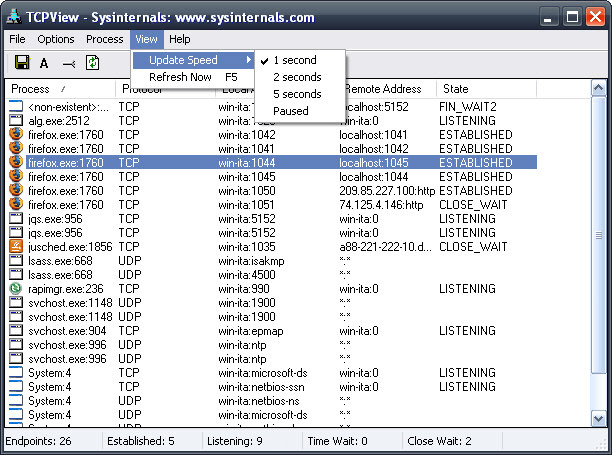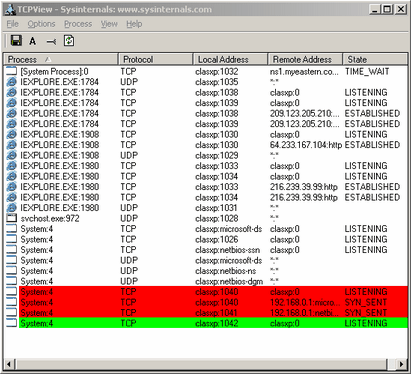

The hardware requirements are insignificant and there is no need to install any prerequisite tools. Its components can be extracted directly from a ZIP archive, so you don't have to go through an installation process. TCPView is offered completely free of charge and it is available for all popular Windows versions.

The information is presented in a logical manner, to make it easier to understand. In other words, the software lets you know which processes and services are connected to the Internet where they send information and from where they receive it. It shows local and remote addresses, as well as TCP connection states.

Tcpvcon usage is similar to that of the built-in Windows netstat utility: You can save TCPView’s output window to a file using the Save menu item. You can close established TCP/IP connections (those labeled with a state of ESTABLISHED) by selecting File|Close Connections, or by right-clicking on a connection and choosing Close Connections from the resulting context menu. Endpoints that change state from one update to the next are highlighted in yellow those that are deleted are shown in red, and new endpoints are shown in green. On Windows XP systems, TCPView shows the name of the process that owns each endpoint.īy default, TCPView updates every second, but you can use the Options|Refresh Rate menu item to change the rate. You can use a toolbar button or menu item to toggle the display of resolved names. When you start TCPView it will enumerate all active TCP and UDP endpoints, resolving all IP addresses to their domain name versions. How to Delete the SCCM Local Cache Using TCPView


 0 kommentar(er)
0 kommentar(er)
